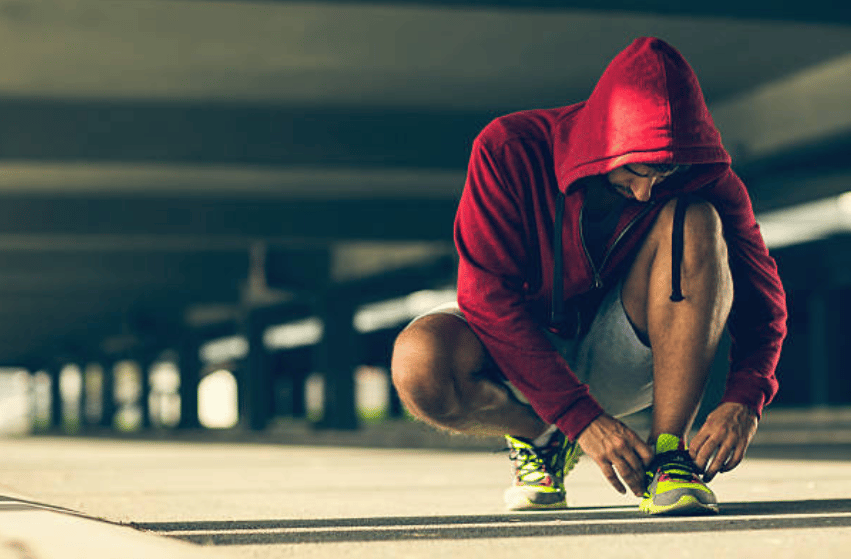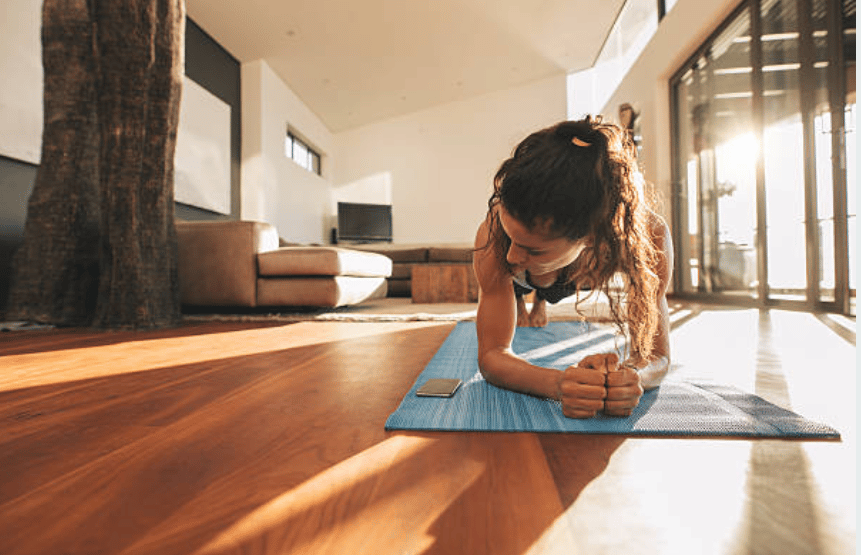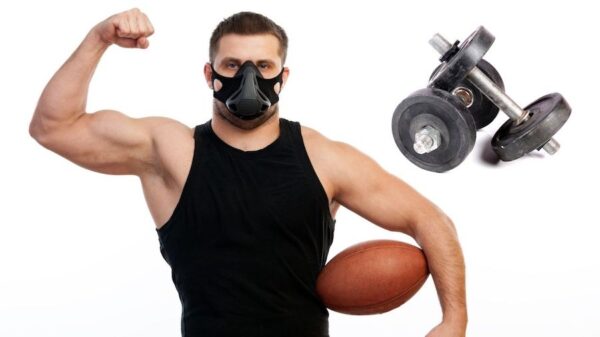Au même titre que les échauffements, les étirements sont indissociables de la pratique sportive. Cela vaut aussi bien pour la musculation que pour le fitness, les sports de combat, les sports collectifs et toutes les autres disciplines impliquant un effort physique. Souvent réalisés en fin d’entraînement en musculation, les étirements (ou stretching) sont des petits exercices censés permettre aux athlètes de gagner en souplesse et de récupérer plus rapidement.
Mais ce sujet controversé divise les professionnels de santé et de l’activité physique (kinésithérapeutes, ostéopathes, médecins, etc.). Alors qu’en est-il réellement ? Tous les étirements musculaires offrent-ils les mêmes bénéfices ? Faut-il s’étirer immédiatement après une séance de musculation ?
Bien s’étirer après l’entraînement, en bref :
- Les étirements sont essentiels pour prévenir les blessures et favoriser la récupération.
- Les étirements libèrent des endorphines, réduisent les douleurs après l’effort.
- Ne jamais faire d’étirements statiques juste après la musculation, cela ralentit la récupération.
- Les étirements PNF combinent plusieurs techniques et offrent une méthode efficace.
- L’idéal est de s’étirer quelques heures après l’effort ou les jours de repos.
Sommaire
Quel est l’intérêt des étirements en musculation ?
Favoriser la prise de muscles
Les étirements statiques sont un excellent moyen d’améliorer la mobilité et d’augmenter votre amplitude de mouvement. À long terme, cela vous permettra d’avoir une meilleure amplitude pendant vos entraînements de musculation.
Des exercices tels que les squats ou les extensions triceps derrière la tête pourront par exemple être réalisés avec plus d’efficacité. Vous obtiendrez par conséquent un meilleur développement musculaire.
Chaque muscle est entouré de fascia, un tissu conjonctif qui englobe vos muscles pour les stabiliser et les maintenir en place. Parfois, ce tissu peut être si serré qu’il limite l’expansion musculaire et empêche la croissance.
Pour imager ce concept, imaginez que vous portiez une ceinture trop serrée après un gros repas. Le fait de réaliser des étirements réguliers vous aidera à élargir ces tissus conjonctifs. Cela favorisera donc votre croissance musculaire.
Récupérer plus rapidement
Après une séance de sport, les étirements peuvent avoir un effet antalgique. En d’autres termes, ils vous aideront à vous détendre efficacement en masquant les douleurs pouvant apparaître à la suite d’un effort un peu trop intense.
Ils provoquent également la libération d’endorphine par l’organisme, plus communément connue sous le nom d’hormone du bonheur. Cela agit de manière bénéfique aussi bien sur le corps que sur le moral du sportif.
En revanche, nous verrons un peu plus loin qu’il est déconseillé de s’étirer juste après un entraînement de musculation.

Éviter les blessures
De nombreuses blessures sont dues à un manque d’échauffement ou à une absence de temps de repos après l’entraînement. Les muscles et les articulations ont besoin d’être préparés à la tension inhérente aux séances de musculation.
De la même manière, ils doivent aussi être refroidis en douceur après vos exercices sous peine de mal se remettre du travail effectué (voire de ne pas se remettre du tout).
Les fibres musculaires et l’aponévrose (une membrane fibreuse qui enveloppe un muscle) qui les relient au reste du corps peuvent en effet se rompre si elles n’ont pas été échauffées au préalable.
En outre, vous ne devez en aucun cas vous étirer après une blessure, au risque de l’aggraver. Vous risqueriez d’endommager les fibres musculaires déjà fragilisées.
Quelles sont les différentes méthodes d’étirement ?
Il est possible de distinguer trois grands types d’étirements :
- Les étirements statiques
- Les étirements balistiques
- Les étirements en PNF
Les étirements statiques peuvent quant à eux être divisés en deux catégories : les étirements actifs et passifs. La première méthode, aussi connue sous le nom de stretching, vise à mettre les muscles en tension. Tout en tendant le membre à étirer, il convient d’appliquer une légère contraction au niveau du muscle en question, relâcher, puis réitérer l’opération.
Ces mouvements doivent toujours être effectués sans forcer, à l’écoute de votre corps. À la moindre douleur, il est indispensable de cesser immédiatement l’exercice.
En ce qui concerne la méthode passive, l’idée est d’utiliser le poids du corps pour relâcher toutes les tensions et assouplir les articulations. Ce type d’activité est parfait pour se détendre et se décontracter plusieurs heures une séance de musculation ou lors des jours de repos. Il est cependant conseillé d’éviter de réaliser des étirements statiques avant votre séance d’exercice physique. Vous risqueriez en effet de réduire vos capacités musculaires de manière non négligeable.

Les exercices balistiques sont quant à eux une manière dynamique de préparer son corps à l’effort ou de le détendre. Les talons-fesses sont sans nul doute les mouvements balistiques les plus connus. Ils ont pour objectif de redynamiser la circulation sanguine et d’apporter de la vigueur à votre corps.
Enfin, la méthode PNF (ou FNP en français pour Facilitation Neuromusculaire Proprioceptive) est une technique de stretching regroupant les différentes méthodes déjà évoquées. Elle vise à profiter des complémentarités entre les exercices privilégiant la tension et ceux favorisant les assouplissements.
Quel est le meilleur moment pour s’étirer ?
Ces différentes méthodes de stretching peuvent être appliquées avant, pendant ou après votre entraînement de musculation. Elles peuvent aussi être réalisées lors de vos jours de repos.
En revanche, les bénéfices obtenus seront différents en fonction du moment où vous vous étirez. Pire, certains étirements sont même à bannir lors de certaines phases de votre programme de musculation.
Avant la séance de musculation
Les étirements statiques sont à proscrire avant un entraînement. En effet, le fait de s’étirer de manière statique avant un effort va générer un déficit en matière de circulation sanguine et d’oxygénation. Vous serez par conséquent moins explosif lors de votre séance de musculation.
Ce conseil est donc valable pour tous les sports nécessitant une forte contraction musculaire. Les étirements statiques peuvent en revanche avoir un intérêt si vous pratiquez la danse ou certaines disciplines en gymnastique.
Si votre pratique sportive inclut des sprints, des sauts ou des efforts explosifs, de nombreuses études montrent aujourd’hui que des étirements statiques réalisés avant l’entraînement diminueront vos performances. Dans certains cas, cela peut même conduire à des blessures telles que des tendinites.
Mais alors comment s’étirer avant une séance de sport ? Privilégiez les étirements dynamiques et balistiques (jumping jacks, montées de genoux, talons-fesses, etc.) pour augmenter la température corporelle et préparer votre corps à l’effort. Cela permet également d’améliorer la circulation sanguine, au contraire des exercices statiques.
À minima, il est important de solliciter les groupes musculaires qui seront travaillés durant la séance. Si votre entraînement cible le haut du corps, votre routine d’étirements doit donc être axée sur les pectoraux, le dos, les biceps et les triceps.
Ces étirements dynamiques sont à intégrer dans votre échauffement pré-musculation, phase essentielle pour une prise de masse musculaire optimale.

DÉCOUVREZ TOUS MES PROGRAMMES
Téléchargez mon application MetamorphX et commencez votre transformation physique dès aujourd’hui !
Pendant la séance de musculation
Pendant votre séance de muscu, vous pouvez profiter de vos temps de repos entre les séries pour étirer des muscles manquant de souplesse. Évitez toutefois d’étirer les groupes musculaires que vous êtes en train de travailler.
Par exemple, si vos mollets sont souvent raides et tendus et que vos exercices sollicitent les bras, vous pouvez tout à fait étirer vos jambes durant 5 à 10 secondes. De la même manière, vous pouvez réaliser des assouplissements du dos et de la colonne vertébrale entre vos séries de squats ou de presse à cuisses. Il vous suffit de vous suspendre quelques secondes à une barre de traction.
Après l’entraînement de musculation
Les étirements juste après la musculation sont fortement déconseillés. En effet, des mouvements statiques réalisés juste après l’effort viendraient diminuer l’afflux sanguin et le retour veineux. S’il peut apporter un soulagement temporaire, le stretching après l’entraînement risque d’aggraver les microtraumatismes subis par les fibres musculaires, empêcher leur cicatrisation (catabolisme musculaire) et donc augmenter le temps de récupération.
Si de nombreuses contradictions existent sur le sujet des étirements après la musculation, mieux vaut privilégier une activité cardio modérée à l’issue du training. Cela aide en effet à améliorer le flux sanguin et à éliminer les déchets présents dans l’organisme.
Mais alors faut-il réaliser des étirements après un entraînement des jambes ou du haut du corps ? Oui ! Il est tout à fait possible d’en tirer des bénéfices si le stretching est fait deux heures après la séance, après la douche par exemple.
En dehors des entraînements de musculation
Pratiqués régulièrement en dehors de vos séances de sport, les assouplissements peuvent vous permettre de gagner en flexibilité et en amplitude. Il peut par exemple être judicieux de mettre en place une routine matinale (veillez toutefois à attendre quelques heures après le lever) pour vous concentrer sur les muscles les plus raides.
Exemples d’exercices à intégrer dans votre programme d’étirements
Avant toute chose, notez qu’il est préférable de toujours étirer un muscle chaud, et ce, de manière progressive. Dans le cas d’un étirement brusque, votre muscle va naturellement se protéger et opposer une résistance.
Vos étirements doivent durer entre 10 et 15 secondes pour éviter une hypoxie musculaire (apport insuffisant en oxygène dans vos muscles). Cela entraînerait une diminution de la souplesse, en d’autres termes l’exact opposé de l’effet recherché.
Veillez également à bien respirer durant vos étirements. Concentrez-vous sur l’inspiration et l’expiration pour ne pas faire d’hyperventilation.
Les étirements du dos sont probablement les plus importants. Il est par conséquent fondamental de bien échauffer le dos avant une séance de musculation, puis de l’étirer quelques heures après pour éviter les douleurs ou un blocage de la hanche.
Pour un étirement du dos après la musculation, vous pouvez vous procurer un rouleau de massage et exercer une pression sur toute la chaîne musculaire dorsale (dorsaux et lombaires).
Cela devra précéder votre séance de stretching. Lors de celle-ci, vous pourrez notamment réaliser des étirements des quadriceps, des fessiers et des ischiojambiers (membres postérieurs).
Il est aussi possible de pratiquer des mouvements de yoga tels que la posture de la pince. Cela consiste à étirer son dos en étant assis, jambes tendues et serrées. Le but est d’attraper ses orteils. La réalisation de ce mouvement soulagera presque immédiatement l’ensemble de vos tensions musculaires.
Vous pouvez également reproduire cet étirement debout, jambes tendues et collées l’une à l’autre, en descendant doucement pour toucher le sol. Logiquement, vos mollets et vos cuisses doivent tirer autant que votre dos lorsque vous faites cet exercice.
Pour étirer le haut du corps, divers exercices peuvent être réalisés.
Les deltoïdes peuvent être détendus si vous tendez le bras droit, le placez en travers de votre corps contre l’épaule opposée puis tirez doucement le bras grâce à votre main gauche pressée contre le coude. Répétez ensuite l’étirement avec le bras gauche.
En ce qui concerne le biceps, l’idéal est d’amener la main gauche dans le bas du dos puis d’essayer de l’attraper avec votre main droite que vous passez par dessus votre épaule droite. Réitérez l’exercice pour l’autre bras.
Enfin, l’étirement du triceps est un mouvement assez simple. Appuyez votre main contre un mur, le bras tendu devant vous. Effectuez une rotation de l’épaule et tentez de faire remonter votre bras vers le haut.
Tous les exercices mentionnés ne sont que des exemples d’étirements. À vous de trouver ou d’adapter votre propre programme d’étirements après la musculation. Ainsi, vous pourrez vous muscler plus facilement, prendre davantage de masse musculaire et récupérer encore mieux.
Le Theragun, une alternative crédible à l’étirement ?
Le Theragun est un accessoire qui remplace l’étirement et favorise la récupération musculaire en seulement 15 minutes grâce à sa conception en forme de balle de tennis. Il permet de cibler les muscles douloureux, prévient les blessures et soulage les spasmes musculaires.
Néanmoins, son prix est relativement élevé. Si vous ne pratiquez pas la musculation de manière régulière, il sera préférable d’opter pour les étirements statiques, balistiques et PNF.
FAQ
Non, il est déconseillé de s’étirer juste après l’entraînement. Mieux vaut attendre 1 à 2 heures pour éviter de ralentir la récupération musculaire.
Avant l’entraînement, privilégiez les étirements dynamiques ou balistiques pour activer les muscles sans réduire la performance.
Oui, surtout en dehors des séances de musculation, pour améliorer la mobilité et prévenir les tensions musculaires.
Tous les groupes sollicités peuvent être étirés, notamment le dos, les jambes et les épaules, mais toujours à distance de la séance.
Oui, bien réalisés, ils aident à détendre les muscles, améliorer la souplesse et réduire les risques de blessures.
Statique : position maintenue sans mouvement. Dynamique : mouvement contrôlé et répétitif. PNF : contraction-relâchement pour un gain de souplesse.






